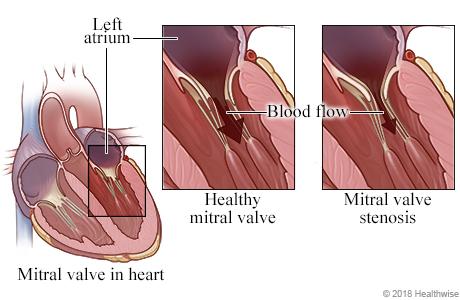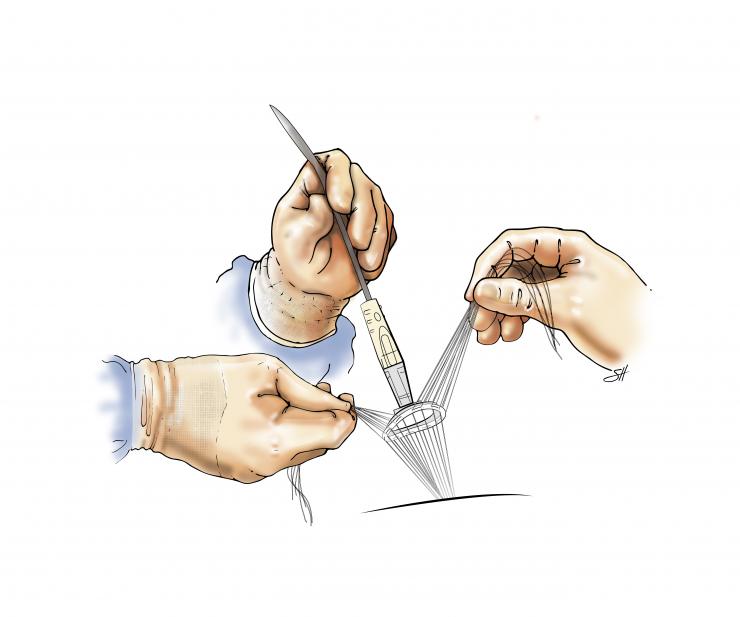What You Need to Know About Mitral Valve Repair
Open heart surgery for aortic or mitral valve repair or replacement has traditionally required opening the patient’s chest through their sternum (breast bone). In many cases today, a minimally invasive technique can be used to avoid this invasive approach. A minimally invasive approach to the heart can be done through small incisions between the ribs (sometimes called “keyhole surgery”). In addition to these smaller scars being cosmetically more appealing and can be hidden under clothing, a minimally invasive approach has consistently been show in scientific reports to be associated with a shorter hospital stays (by about one to two days), faster recovery, less bleeding and other complications, as well as better patient satisfaction when compared to an open procedure.
In comparison to robotic surgery, which is performed through similar “keyhole" incisions, the surgeon is operating directly on the patient with minimally invasive surgery (without a robot), and procedures are generally shorter, less costly, and less complicated. On the other hand, minimally invasive valve surgery is more technically challenging than an open approach and requires a trained and experienced surgeon.
Valve Stenosis
With valve stenosis, the heart valve can become scarred and calcified, which causes narrowing of the valve.
Stenosis happens most often in the aortic valve, but can occur in any of the heart’s four valves. When a healthy aortic valve (illustrated) is open, it's close to the size of a half dollar. With stenosis, the valve's opening becomes narrowed, even down to the diameter of a pencil eraser. In many cases, this is caused by the natural wear and tear of aging. As we get older, calcium can form on the valve’s leaflets. As this deposit builds up, the opening can become narrower and blood can’t flow as easily through the valve.
When aortic valve stenosis becomes severe, the valve should usually be replaced.
Valve Insufficiency or Regurgitation
Valve insufficiency or regurgitation happens more often in the mitral valve. When a valve leaks, the leaflets don’t close completely and some blood leaks backward rather than all of the blood flowing completely in one direction. Like stenosis, valve leakage most often happens because the valve simply wears out as we get older. Other circumstances such as a defective valve at birth, or rheumatic fever, can also cause a leak. In some cases, these valves can be repaired. In many cases, the valve must be replaced.
Symptoms of Valve Disease
You can have either valve stenosis or leakage and not know anything is wrong. However, if your condition becomes more severe you may begin to experience symptoms such as:
- Shortness of breath
- Chest pain
- Lightheadedness
- Fainting
- Fatigue
- Heart murmur
Treatment Options
Surgical Procedures
While narrowing of either the aortic or mitral valve typically requires valve replacement (with a manufactured “mechanical” valve, or with a tissue valve which typically comes from a cow or pig), mitral valve disease can typically be corrected by repairing the patient’s own native valve. Repair of the mitral or aortic valve usually involves remodeling of the valve tissue to make it smaller or less redundant (valvular “plastic surgery”), and is most often reinforced with a synthetic ring or band to support and remove tension on the repair.
Mitral valve repair techniques include trimming loose tissue from the leaflets and re-suspension of the leaflets as well as annuloplasty - inserting ring around the valve to bring the leaflets back into a normal position.
What to Expect After Mitral Valve Surgery
After surgery, you will be taken to the recovery room.. When you wake up, you will feel groggy and a little “out of it." You will be connected to some monitors and IV lines for medications and fluids. You may also have a special IV in your neck to measure heart function. You typically may have several other tubes and catheters that are not painful and will remain in place for one or two days after surgery to help your medical team monitor your condition.
After typically a day or so in the intensive care unit, you will be transferred to a hospital room for additional recovery in the hospital. You will assisted to begin walking in your room and in the hallways, typically within a day or so after surgery. You will be discharge to home or to a skilled nursing facility, depending on your level of support at home, within typically about five to seven days after surgery.
Outcome
Valve repair, when it is possible to perform, is typically associated with fewer complications and prolonged survival compared to valve replacement. Repair also less commonly requires the use of blood thinner medication for prolonged periods of time after surgery.








 Credit
Credit

